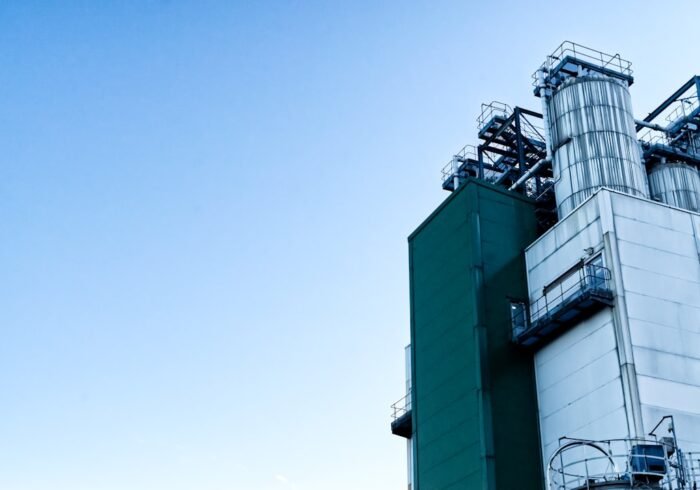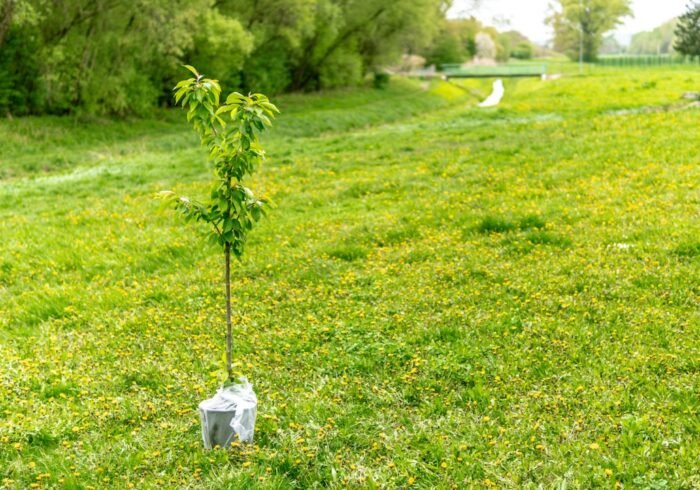A natural phenomenon that causes the Earth’s surface to warm is the greenhouse effect, and it has implications for greenhouse farming. It happens when energy from the sun enters the Earth, is absorbed, & then escapes again as infrared radiation. This infrared radiation is trapped by atmosphere-based gases called greenhouse gases (GHGs), which stop it from returning to space. The preservation of the planet’s temperature, which supports life, depends on this process. The average temperature would drop to about -18 degrees Celsius (0 degrees Fahrenheit) instead of the current average of about 15 degrees Celsius (59 degrees Fahrenheit) if the greenhouse effect didn’t exist.
Key Takeaways
- The Greenhouse Effect is the process by which the Earth’s atmosphere traps heat from the sun, leading to a warming of the planet.
- In greenhouses, the Greenhouse Effect is utilized to create a controlled environment for plant growth by trapping heat inside the structure.
- Carbon dioxide and other greenhouse gases play a crucial role in enhancing the Greenhouse Effect by trapping heat in the atmosphere.
- Temperature regulation in greenhouses is important for optimizing plant growth and ensuring ideal growing conditions.
- The Greenhouse Effect can have a significant impact on plant growth, influencing factors such as photosynthesis and transpiration.
However, burning fossil fuels, deforestation, & industrial processes are the main ways that human activity has exacerbated the greenhouse effect. As a result, the atmospheric concentration of greenhouse gases like carbon dioxide (CO2), methane (CH4), and nitrous oxide (N2O) has increased. Sea level rise, extreme weather, & ecosystem changes are just a few of the dire environmental effects that result from the enhanced greenhouse effect’s contribution to global warming and climate change. Addressing the effects of this phenomenon & creating plans for sustainable practices—especially in greenhouse farming & agriculture—require an understanding of it. Similar principles apply to agricultural greenhouses, where the greenhouse effect is purposefully used to create the ideal conditions for plant growth.
A greenhouse is usually made of transparent materials, like plastic or glass, which trap heat inside while letting sunlight in. The plants, soil, and air inside the greenhouse are all warmed by sunlight. These surfaces release heat as infrared radiation as a result of absorbing solar energy.
Nevertheless, the greenhouse’s transparent materials effectively create a controlled microclimate by keeping a large portion of this heat from escaping. In colder climates or during off-seasons, this controlled environment can provide temperatures that are higher than those outside. Regardless of the outside weather, growers can cultivate a wide range of plants all year round by maintaining a constant temperature & humidity level. Also, ventilation systems can be added to greenhouses to further control humidity and temperature, giving plants the best possible growing conditions while reducing stressors that might otherwise impede their growth.
| Aspect | Metric |
|---|---|
| Temperature | Optimal range for plant growth: 18-24°C |
| Humidity | Ideal level for most plants: 50-70% |
| Carbon Dioxide | Recommended concentration: 1000-1200 ppm |
| Light Intensity | Desired level for photosynthesis: 200-1000 µmol/m²/s |
| Ventilation | Recommended air exchange rate: 5-10 times per hour |
In both the natural greenhouse effect and its application in greenhouses, carbon dioxide is essential. CO2 is not just a byproduct of respiration in a greenhouse; it is also an essential part of photosynthesis. Carbon dioxide is vital to the growth and development of plants because it is used in this process to create glucose and oxygen. CO2 levels are purposefully raised in many commercial greenhouses to speed up photosynthesis and boost plant yields.
This dynamic is also influenced by other greenhouse gases. Water vapor, for example, is another important greenhouse gas that affects greenhouse temperature control. It can raise humidity levels, which is important for some crops that do well in damp conditions. Despite being less common in greenhouses than CO2, methane and nitrous oxide can nevertheless have an indirect effect on plant growth by affecting the availability of nutrients & the health of the soil.
To maximize plant growth and minimize any potential environmental harm, it is crucial to comprehend how these gases are balanced. One crucial component of greenhouse management that has a direct impact on plant productivity and health is temperature control. Within certain temperature ranges, plants can flourish; outside of these ranges, they may experience stress or even die. Many vegetables, for example, like temperatures between 18 and 24 degrees Celsius (65 and 75 degrees Fahrenheit), but tropical plants might need warmer temperatures.
Thus, it is essential to maintain the right temperature in order to maximize yield & quality. Passive & active techniques are both necessary for efficient temperature control. One example of a passive technique is the thoughtful positioning of greenhouses to optimize solar exposure and reduce heat loss in the winter.
Active techniques could include cooling systems in the summer or heating systems in the winter. Also, shading strategies can be used to avoid overheating during the hottest parts of the day. By carefully controlling temperature swings, growers can create the perfect environment for healthy plant growth and lower the risk of temperature-related diseases. Because it fosters an environment that is favorable to photosynthesis and nutrient uptake, the greenhouse effect has a major impact on plant growth.
Plant metabolic processes can be accelerated by elevated greenhouse temperatures, resulting in quicker growth rates & shorter harvest times. A few degrees more heat, for instance, can accelerate the growth of crops like tomatoes and cucumbers, according to studies. But it’s important to understand that while some plants thrive in warmer climates, others might experience heat stress if the temperature rises too much. In sensitive species, too much heat can cause wilting, decreased photosynthesis efficiency, and even flower drop. Consequently, it is essential to comprehend the distinct temperature needs of various plants in order to maximize growth conditions in greenhouses.
For a comprehensive approach to plant health, temperature must also be taken into account along with elements like humidity and light intensity. Controlling Agricultural Greenhouses’ Greenhouse Effect. An important consideration in agricultural greenhouses is the greenhouse effect, which must be controlled by striking a careful balance between energy efficiency & ideal growing conditions. Advanced Systems for Climate Control. Installing cutting-edge climate control systems that continuously monitor & modify CO2, humidity, and temperature is one practical tactic. These systems can maintain optimal conditions without using excessive amounts of energy by utilizing sensors and automated controls.
Eco-Friendly Methods for a Greener Future. Including sustainable practices, like using renewable energy sources for heating and cooling systems, is another tactic. By generating electricity for heating or ventilation fans, solar panels can lessen greenhouse operations’ carbon emissions and dependency on fossil fuels. By absorbing heat during the day and releasing it at night, thermal mass—such as stone walls or water tanks—can also aid in temperature stabilization.
techniques for natural ventilation. Also, incorporating natural ventilation methods can lower energy expenses while improving greenhouse air circulation. This can be accomplished by carefully placing openings or vents that let in cooler air while ejecting hot air.
By integrating these tactics, farmers can successfully control the greenhouse effect and encourage environmentally friendly and crop-beneficial sustainable practices. The design of greenhouses has recently advanced with an emphasis on increasing plant productivity while minimizing environmental impact and improving energy efficiency. The creation of energy-efficient glazing materials that increase insulation without sacrificing light transmission is one noteworthy innovation.
These materials reduce heat loss during the winter months and help keep greenhouse temperatures steady. Another cutting-edge strategy uses greenhouse vertical farming methods. Growers can lower their use of fertilizer & water while increasing yield per square meter by increasing crop production in vertical space. Also, this technique makes it possible to better regulate environmental elements like humidity and light exposure.
Also, the management of greenhouses has been transformed by the clever integration of technology. Artificially intelligent automated systems are able to dynamically optimize growing conditions by analyzing data from multiple sensors. These devices can modify nutrient delivery, irrigation rates, and lighting schedules in response to current environmental conditions, guaranteeing that plants get exactly what they require for healthy growth. As environmental concerns grow & technology advances, greenhouse farming is set to undergo a dramatic transformation in the future. Greenhouses provide a practical way to produce food in controlled environments that are less vulnerable to outside weather fluctuations, as traditional agricultural practices may become less sustainable as climate change intensifies.
Also, as biotechnology advances, crops tailored for greenhouse cultivation may be created that yield more while using fewer resources. These genetically modified organisms (GMOs) could be modified to better withstand pests or flourish in a variety of environments, which would lessen the need for chemical pesticides. Urban greenhouses, which combine local food production with sustainability initiatives, are becoming a promising trend as urbanization rises worldwide. These buildings can be incorporated into urban landscapes to supply fresh produce and lower transportation-related emissions related to food distribution.
Finally, in order to create sustainable solutions that tackle issues of food security while reducing environmental effects, it is critical to comprehend how the greenhouse effect affects natural ecosystems and agricultural practices. A more sustainable agricultural future in the face of changing climate conditions can be shaped in large part by greenhouse farming through creative designs and efficient management techniques.



